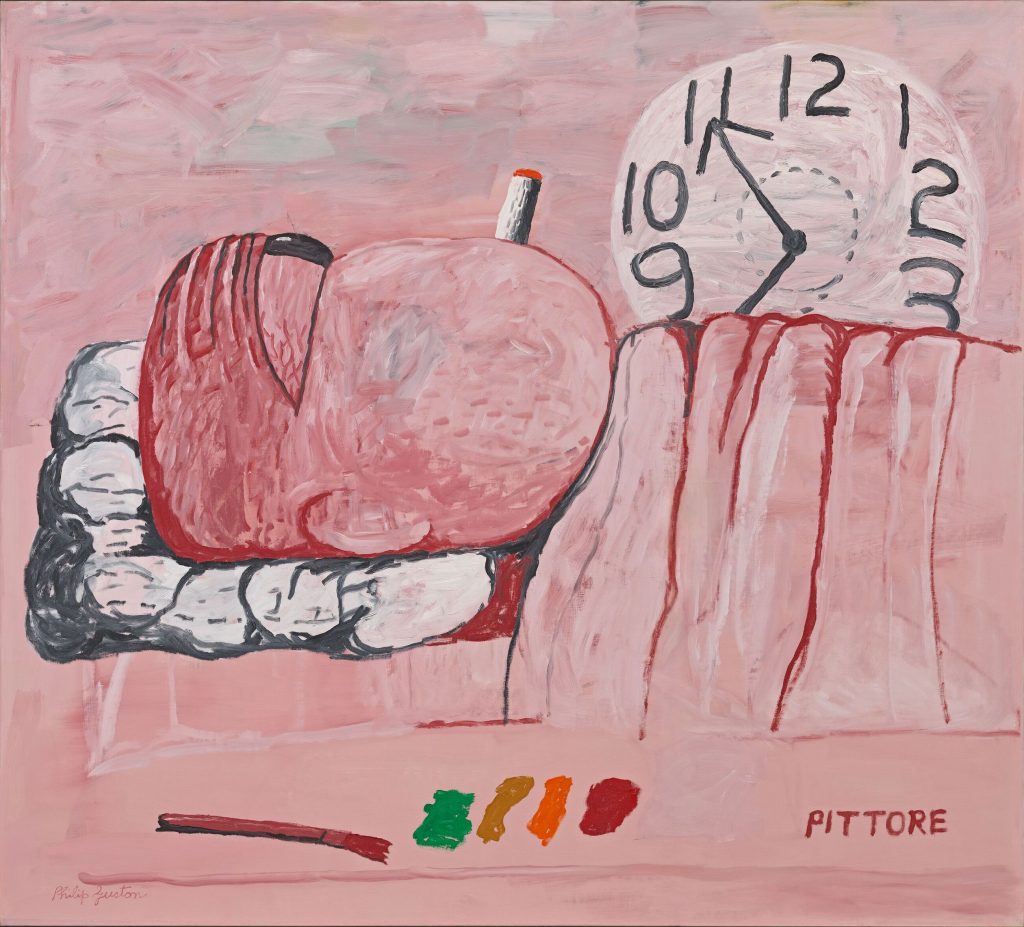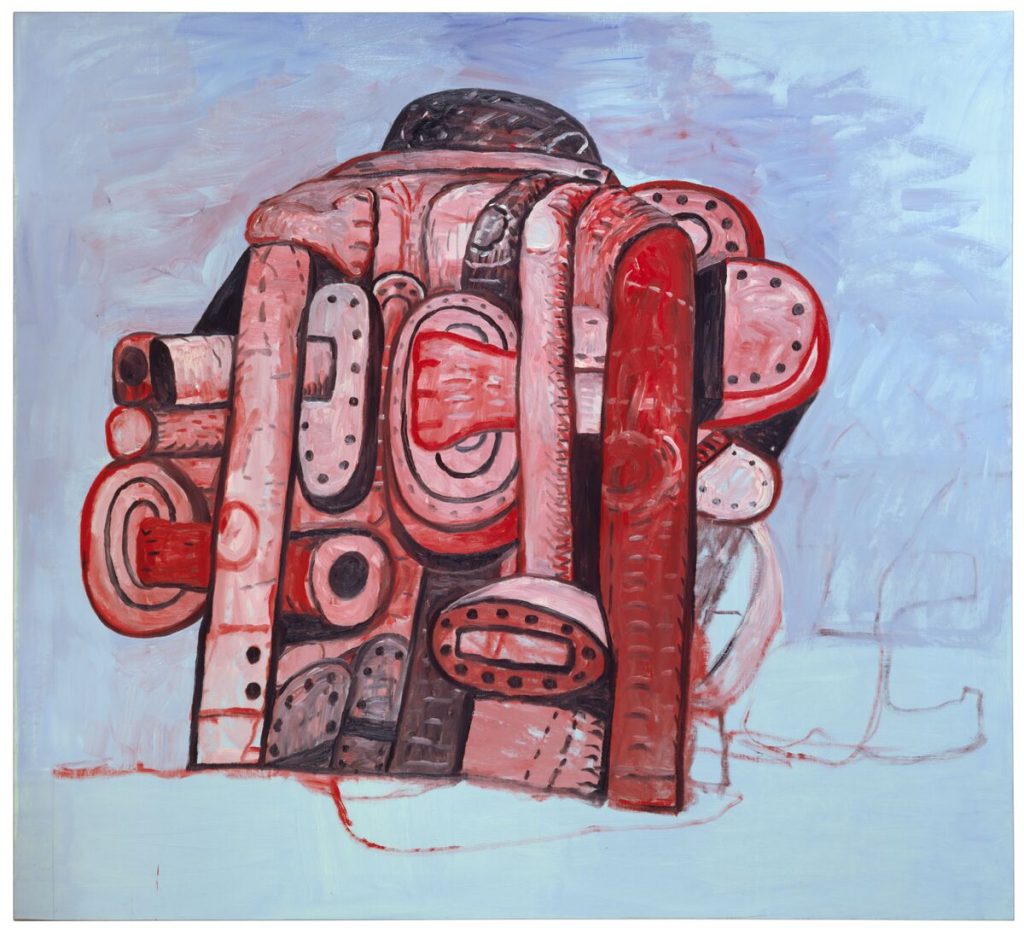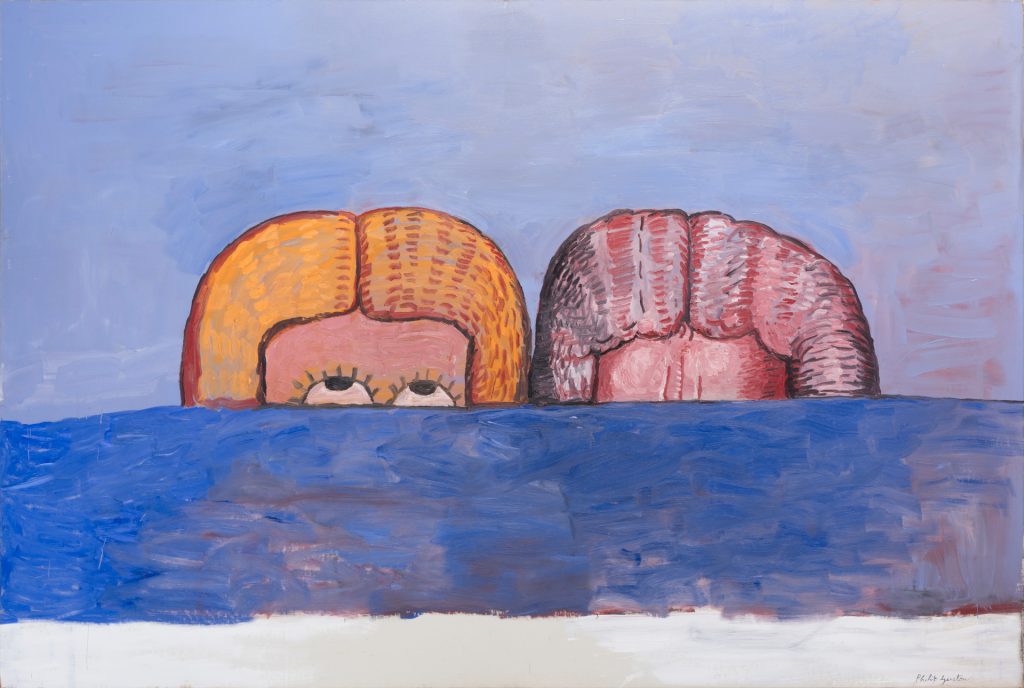Message from Sally Radic, Executive Director of The Guston Foundation:
On September 21, the directors of the four museums that have been planning to present the major retrospective Philip Guston Now in 2021-22 announced online that they will “postpone the exhibition until a time at which we think that the powerful message of social and racial justice that is at the center of Philip Guston’s work can be more clearly interpreted.” The opening date for the “reframed” and “reconsidered” project is to be set for sometime in 2024. The exhibition has already been postponed once, by almost a year, because of the coronavirus pandemic. Its catalogue was already published this past June.
Reactions to the announcement have appeared extensively in media outlets and on social media.
We share with you below a statement from Musa Mayer, President of The Guston Foundation and daughter of Philip Guston, that was written in response to media requests for comment. We have also provided links to coverage at a number of publications, including news reports as well as opinion articles.
As always, the Foundation is committed to raising awareness and educating the public about the art and life of Philip Guston, and we will continue to share information through this website and other projects, and to encourage the direct experience of Guston’s art, to further these goals.
Statement from Musa Mayer
September 23, 2020
I am deeply saddened by the decision of the museum directors not to exhibit the Philip Guston Now retrospective.
Half a century ago, my father made a body of work that shocked the art world. Not only had he violated the canon of what a noted abstract artist should be painting at a time of particularly doctrinaire art criticism, but he dared to hold up a mirror to white America, exposing the banality of evil and the systemic racism we are still struggling to confront today.
In these paintings, cartoonish hooded figures evoke the Ku Klux Klan. They plan, they plot, they ride around in cars smoking cigars. We never see their acts of hatred. We never know what is in their minds. But it is clear that they are us. Our denial, our concealment. They are even the artist, as the most well-known work of this series makes clear. My father dared to unveil white culpability, our shared role in allowing the racist terror that he had witnessed since boyhood, when the Klan marched openly by the thousands in the streets of Los Angeles. As poor Jewish immigrants, his family fled extermination in the Ukraine. He understood what hatred was. It was the subject of his earliest works.
This should be a time of reckoning, of dialogue. These paintings meet the moment we are in today. The danger is not in looking at Philip Guston’s work, but in looking away.
The superb retrospective catalogue, with its essays by the four curators, will remain as the only evidence of their years of insightful work to allow the entire scope of my father’s career to be seen by a new generation of art lovers. The Guston Foundation’s newly launched website, PhilipGuston.org, and the just-released major monograph “Philip Guston: A Life Spent Painting” by Robert Storr make major contributions to the artist’s legacy. But nothing can fully substitute for seeing the works themselves.
Musa Mayer





